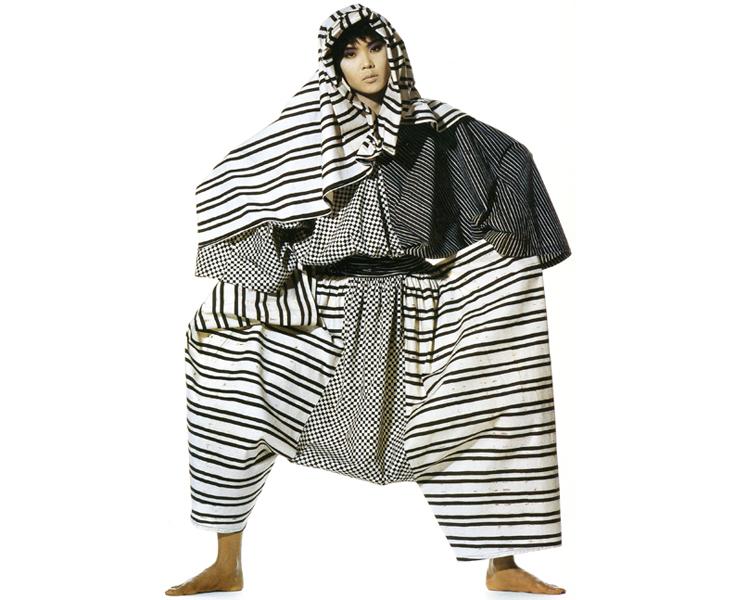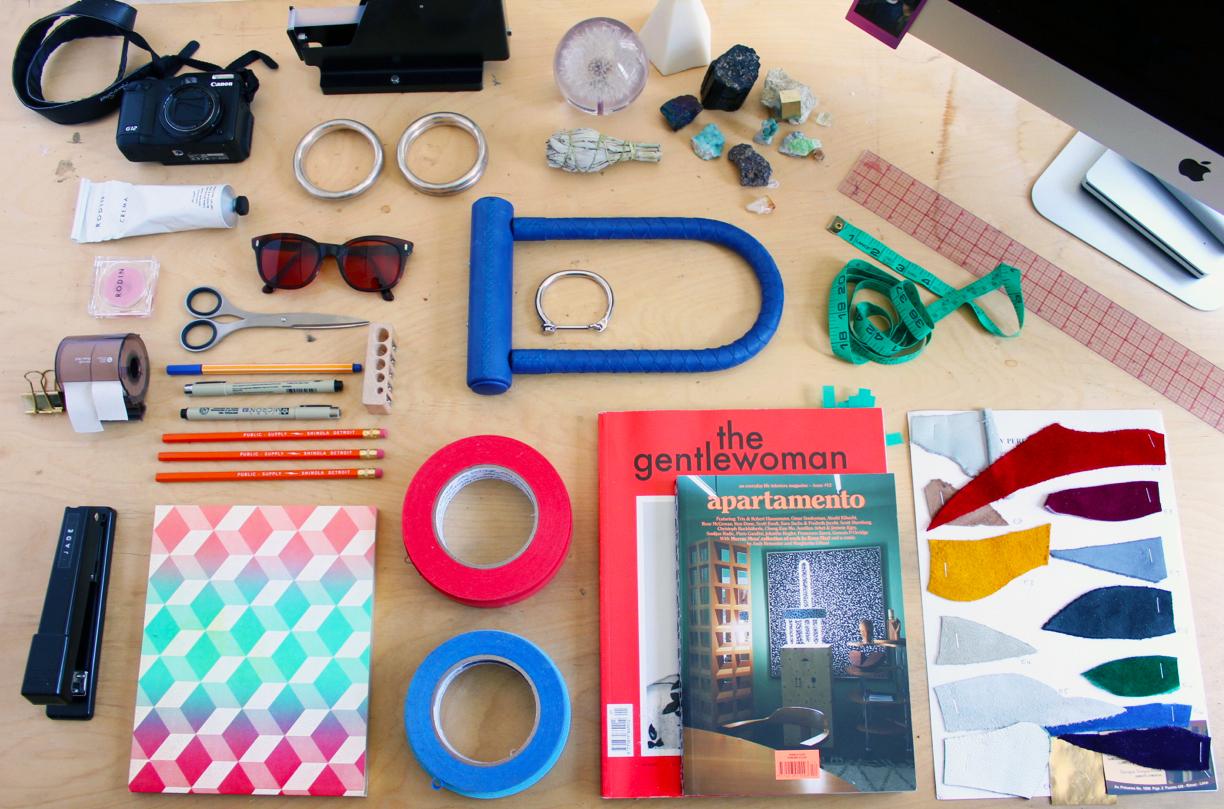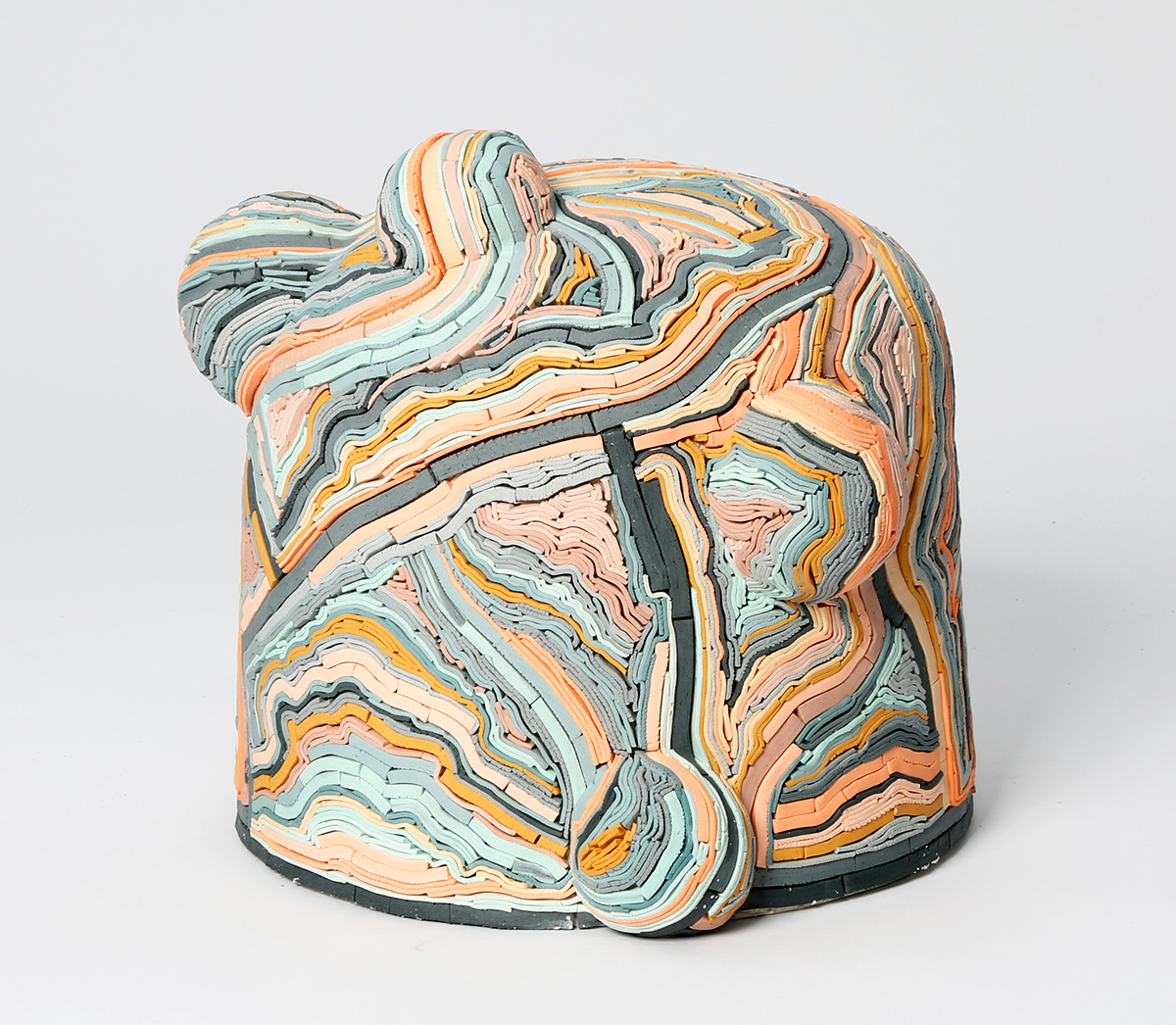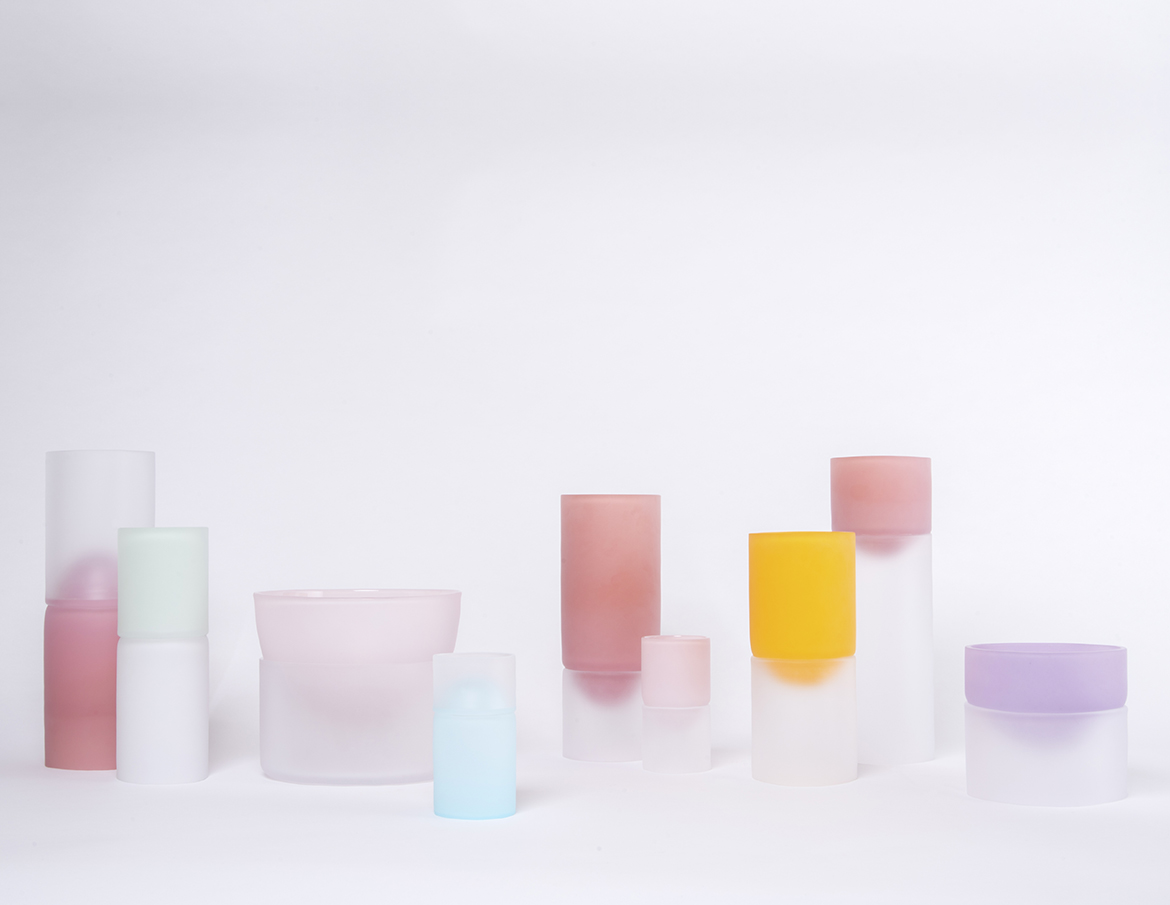
07.09.19
Up and Coming
5 Breakout Ceramics and Glass Artists From This Year’s RCA Showcase
Something kind of special is happening in the Ceramics and Glass program at London’s Royal Collage of Art. We can remember a time when the RCA was churning out future furniture design stars like Max Lamb, Martino Gamper, and Raw-Edges, but in the last few years, the locus of talent seems to have shifted to those “it” mediums. (Remember these? And these?) So this year we’re cutting right to the chase and featuring our favorite projects from the department of Ceramics and Glass, which this year offered up everything from terrazzo-style bowls made from recycled clay fragments, to Zen-like ribbed glass works, to jars made from tiny glass granules that resemble bubbling foam. Take note of these names — we expect you’ll be hearing a lot more from them.
Jinya Zhao
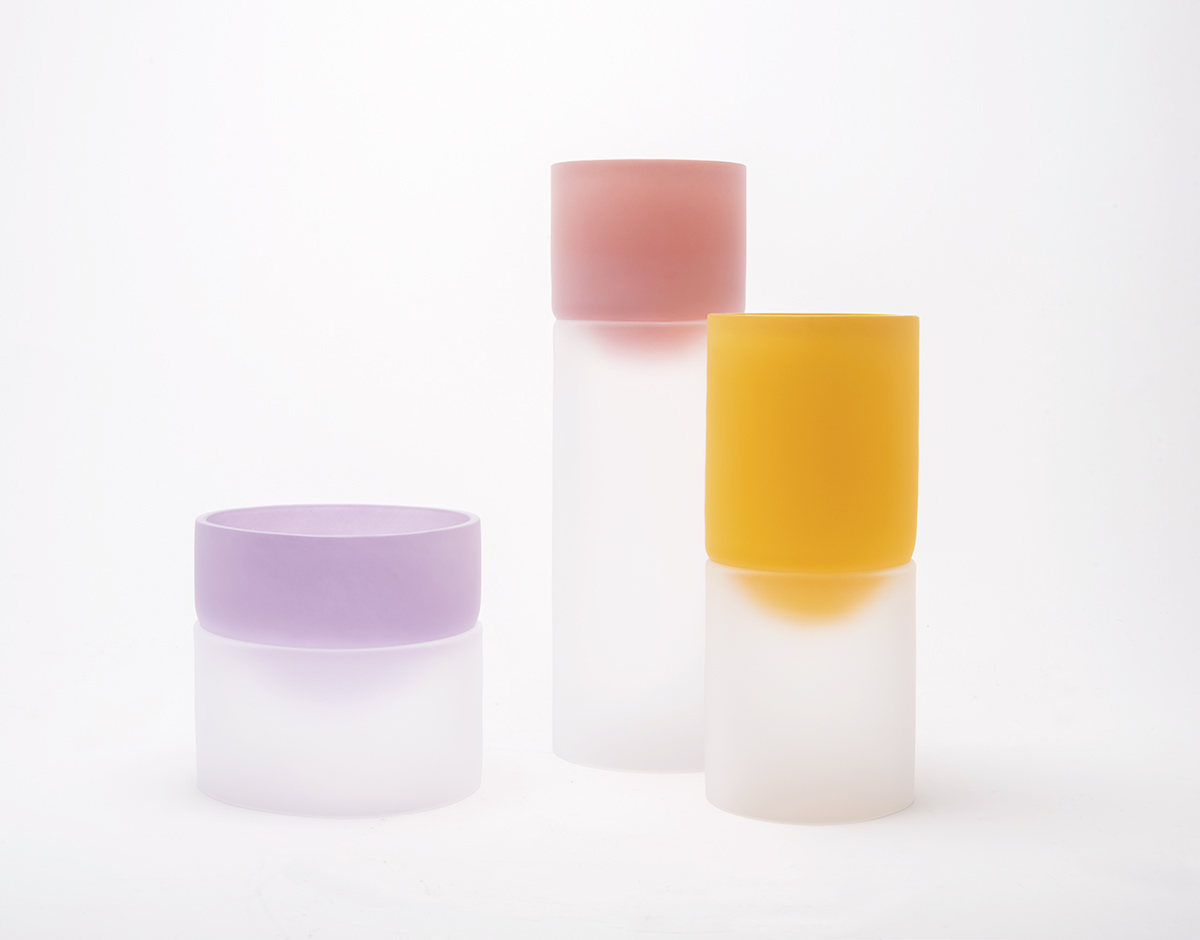
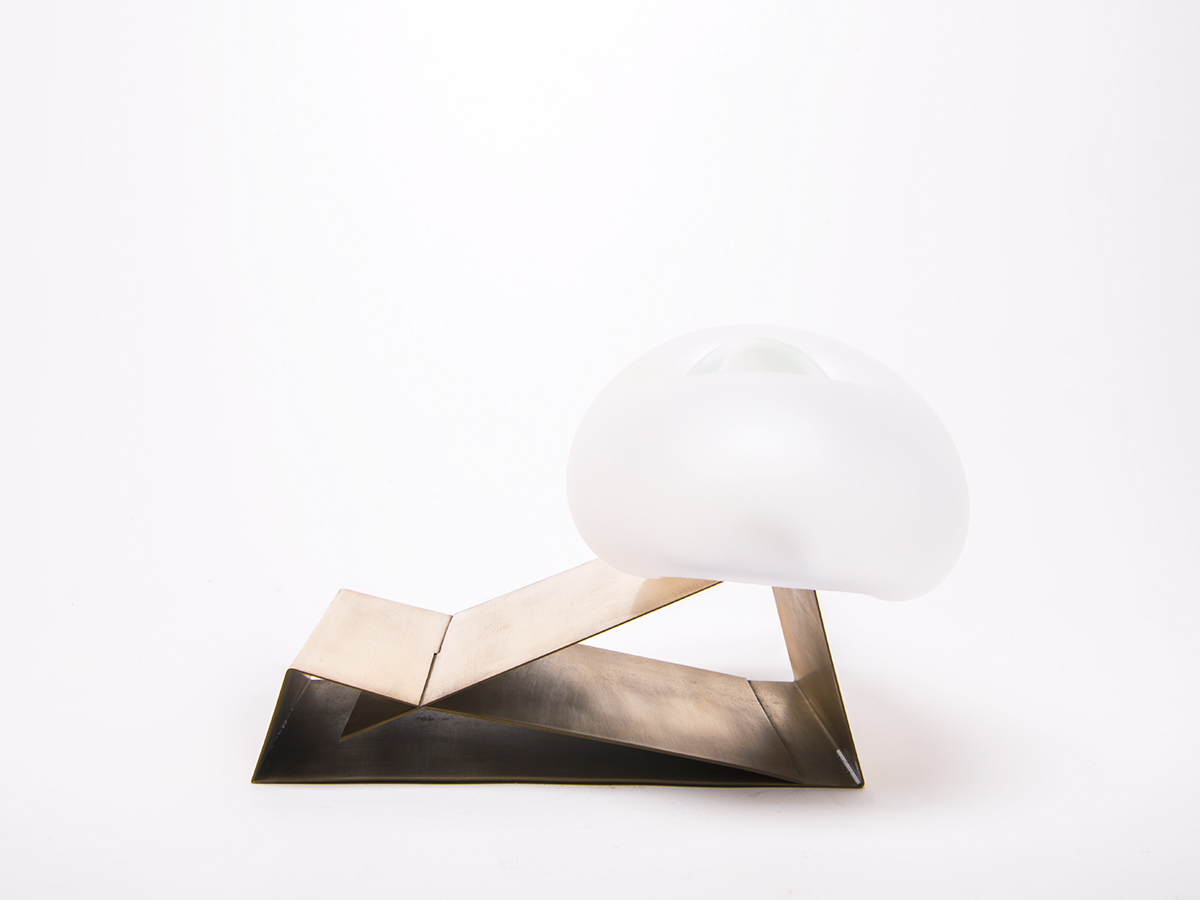
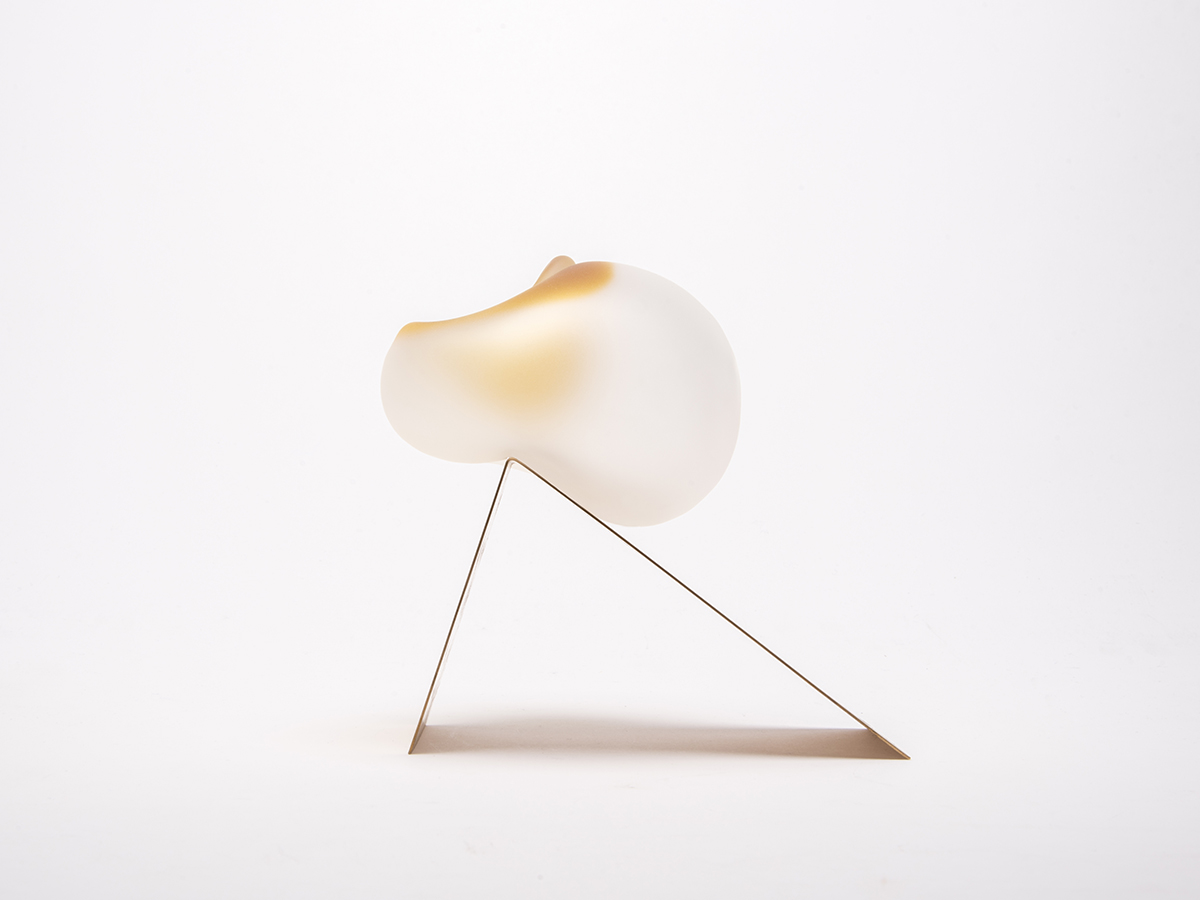
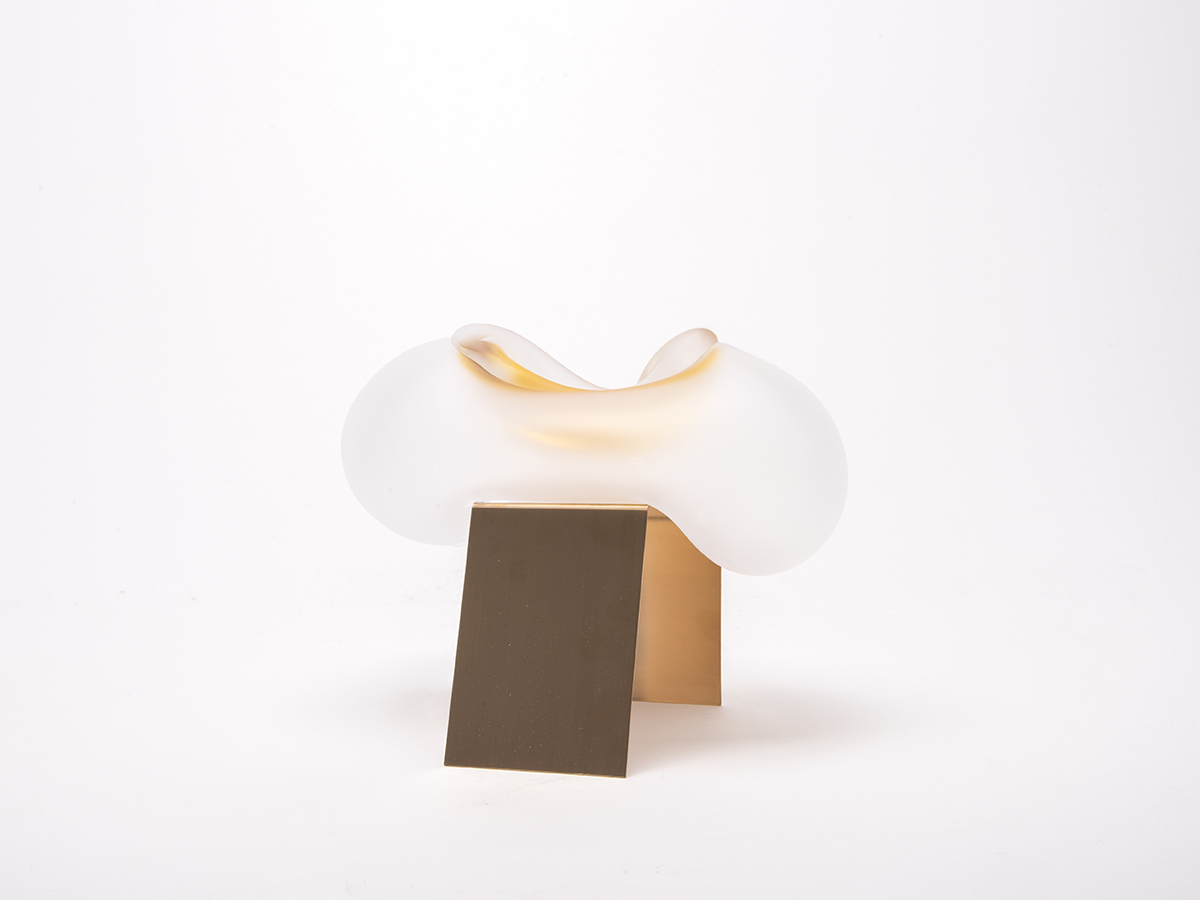 Chinese-born designer Jinya Zhao has created two collections of glassware, both of which sit somewhere between art and design. In one, soft curved frosted glass balances upon angular metal forms; in the other, vessels are stacked with opaque and layered blown glass to deliberately obscure the interior. Both explore the subtle relationship between color, form, and structure, and how different glass treatments can influence a viewer’s perception and emotional response.
Chinese-born designer Jinya Zhao has created two collections of glassware, both of which sit somewhere between art and design. In one, soft curved frosted glass balances upon angular metal forms; in the other, vessels are stacked with opaque and layered blown glass to deliberately obscure the interior. Both explore the subtle relationship between color, form, and structure, and how different glass treatments can influence a viewer’s perception and emotional response.
Ho Lai
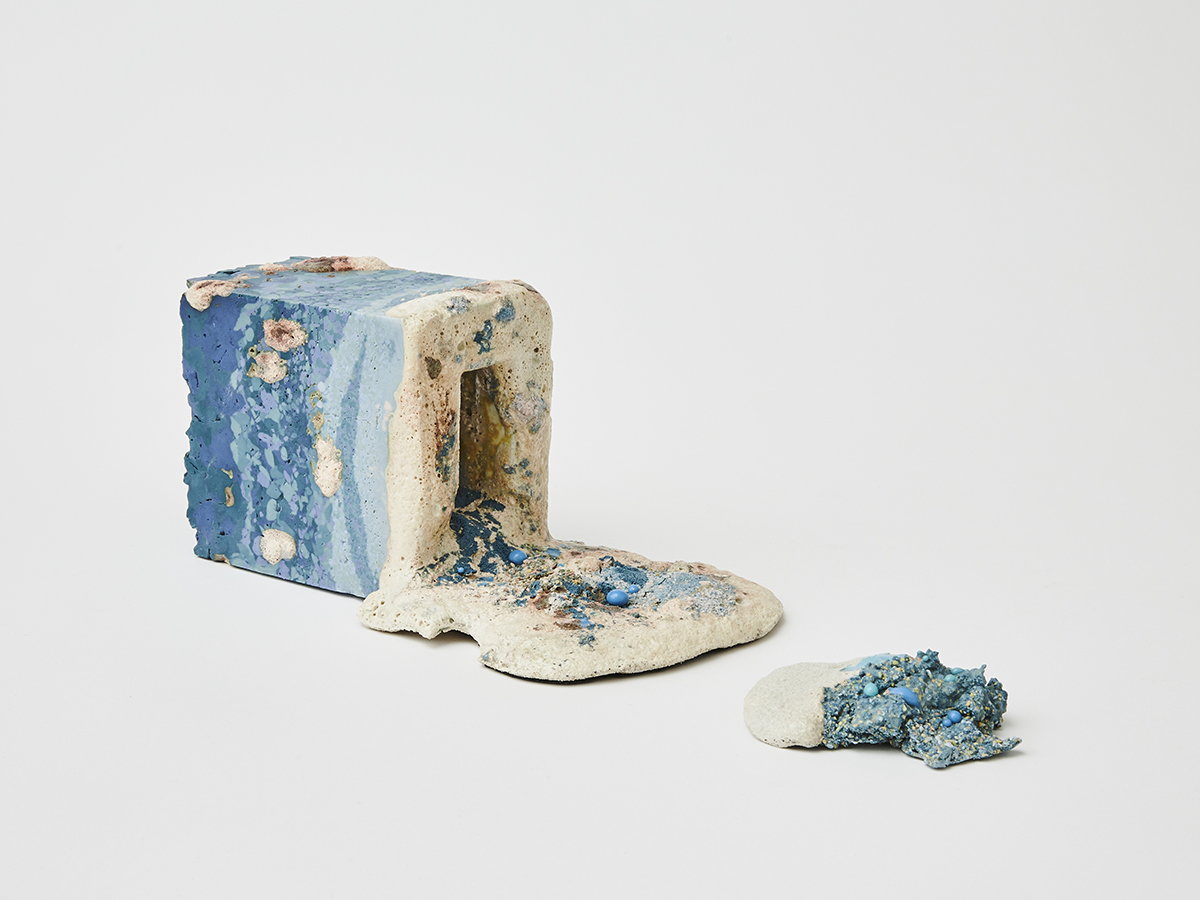
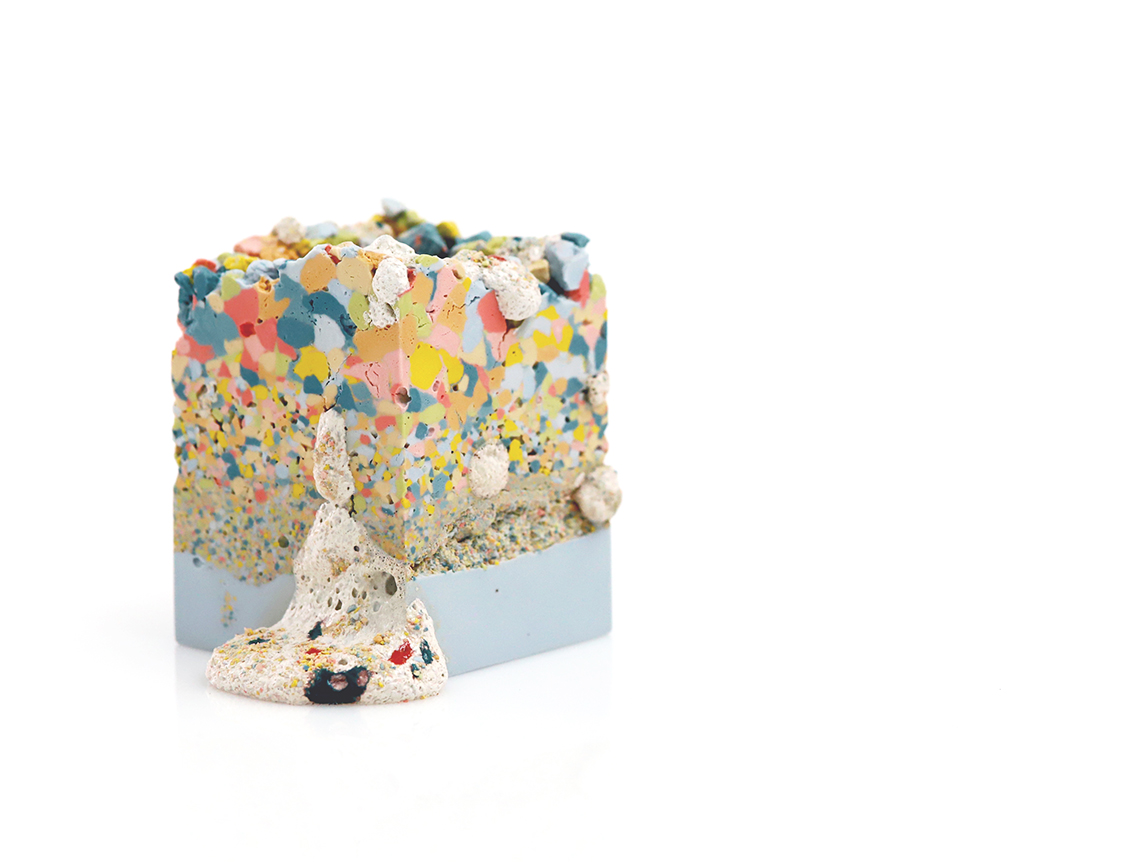
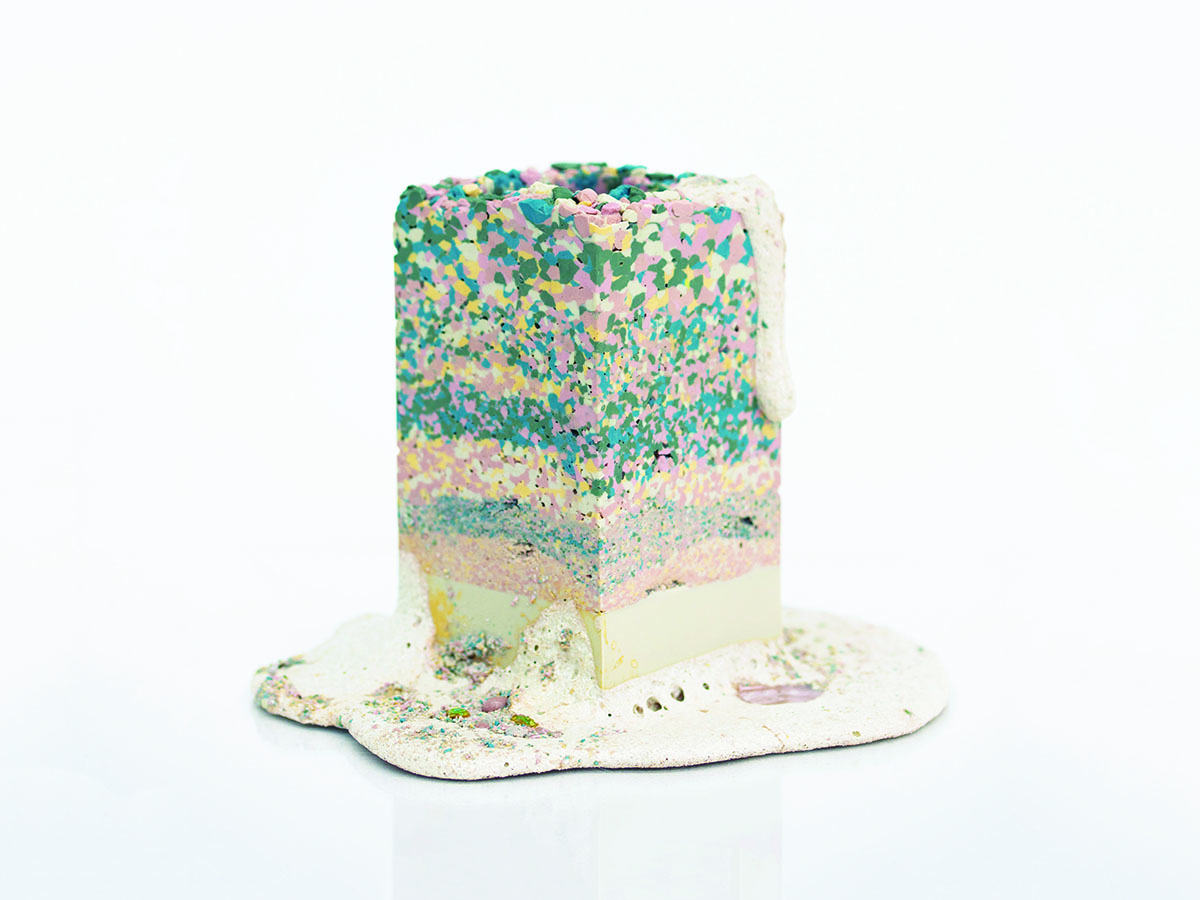
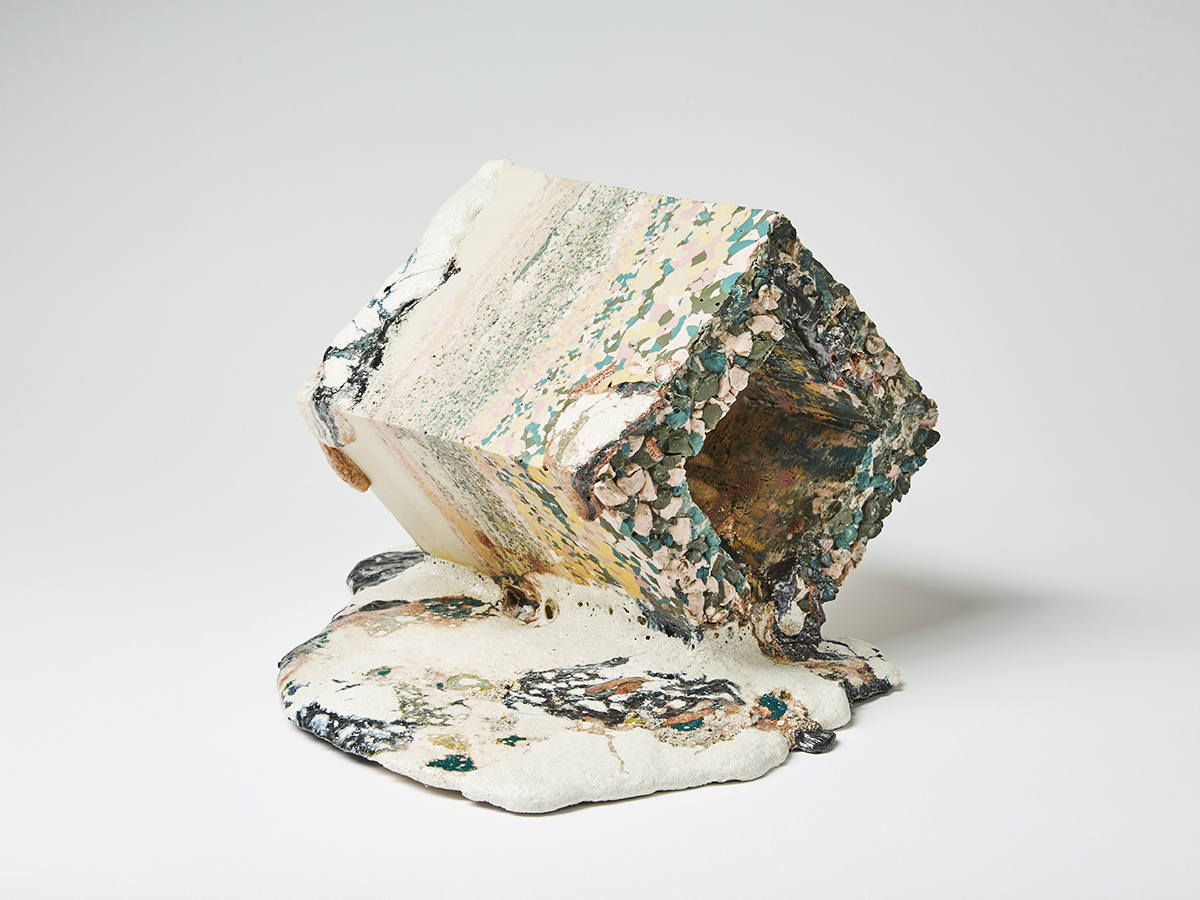
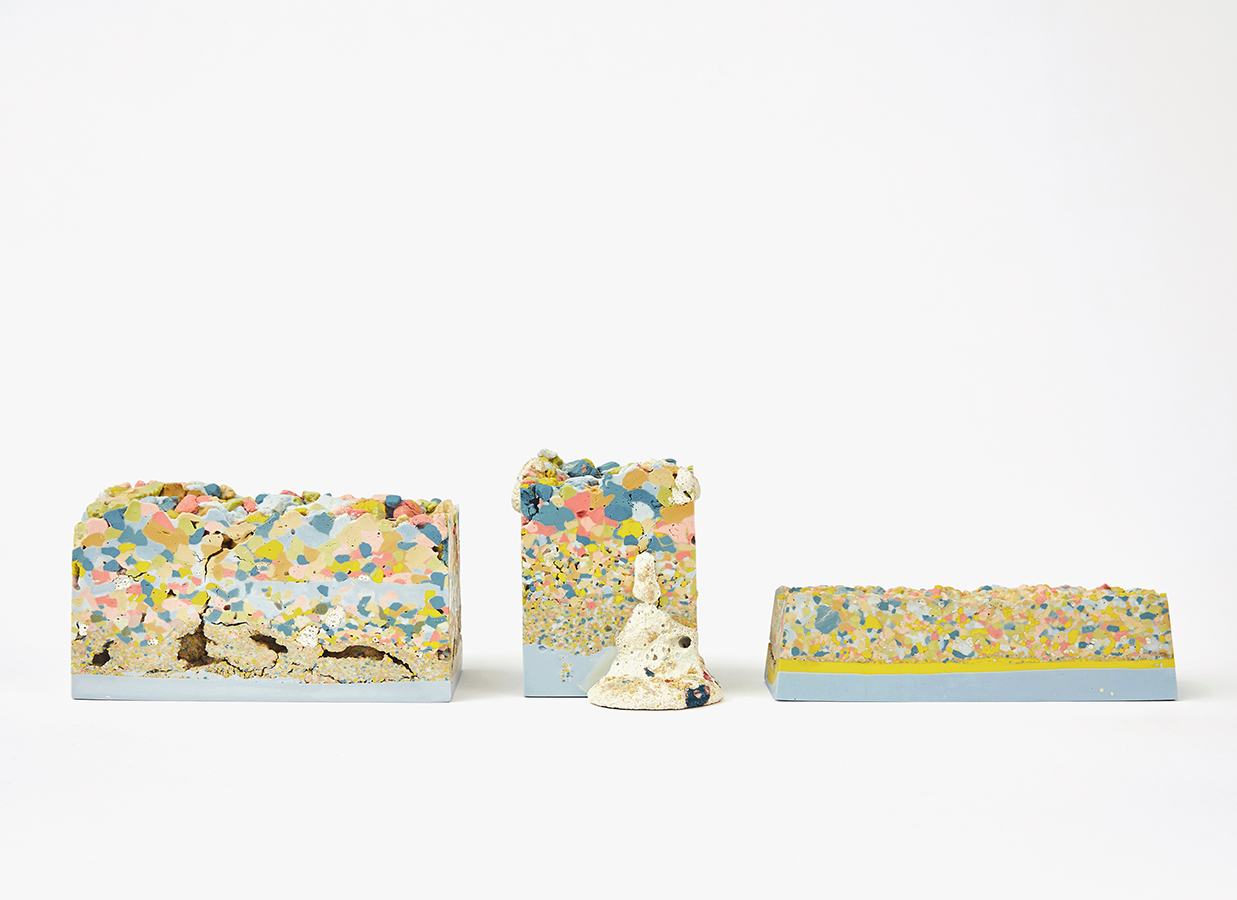
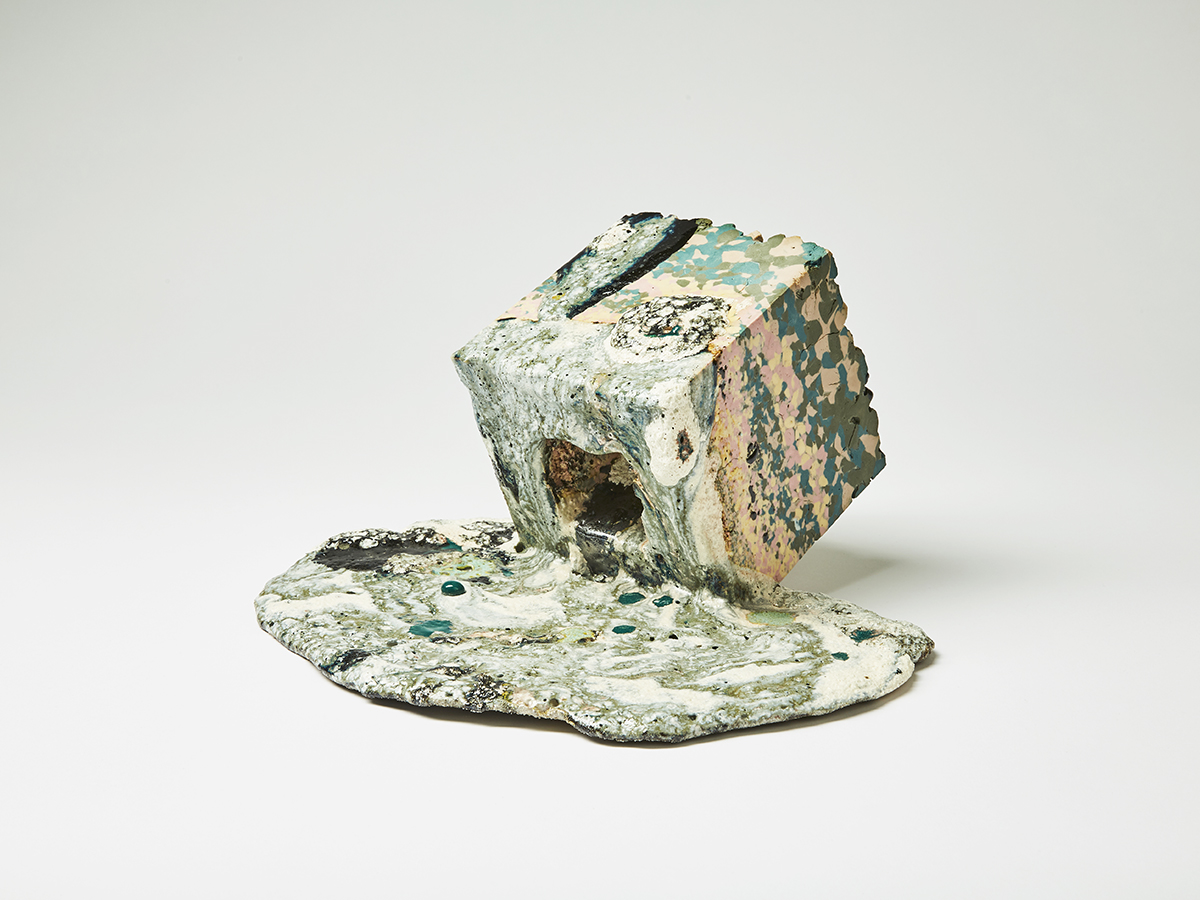 There is perhaps no greater overused material right now than clay aggregate but Ho Lai’s unevenly shaped vessels still manage to seem fresh. (We especially like the one that resembles funfetti.) Each piece is meant to reference the fading state of the human body, the aggregates representing the cells, atoms, and molecules Lai pulls from microscopic images, medical illustrations, and cross-section diagrams.
There is perhaps no greater overused material right now than clay aggregate but Ho Lai’s unevenly shaped vessels still manage to seem fresh. (We especially like the one that resembles funfetti.) Each piece is meant to reference the fading state of the human body, the aggregates representing the cells, atoms, and molecules Lai pulls from microscopic images, medical illustrations, and cross-section diagrams.
Joshua Kerley
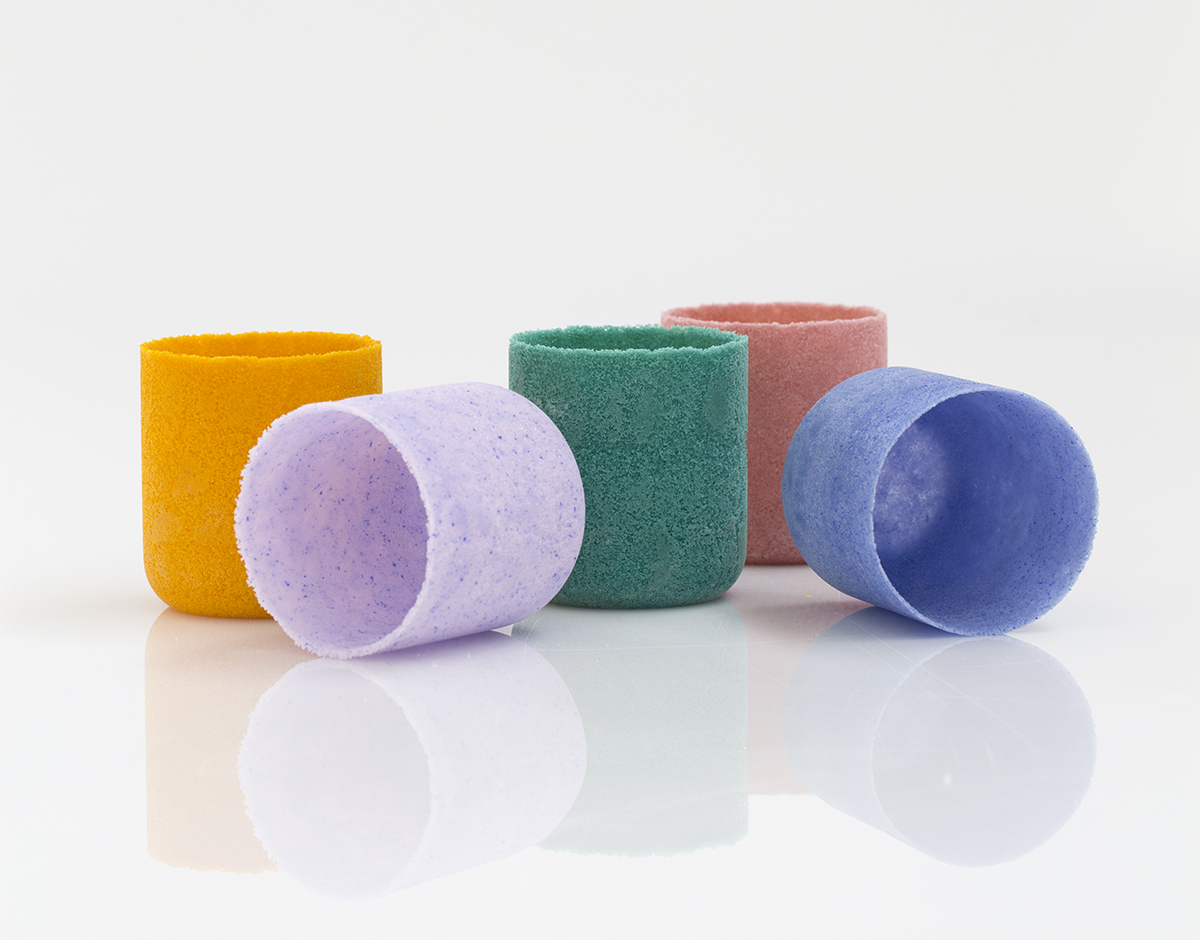
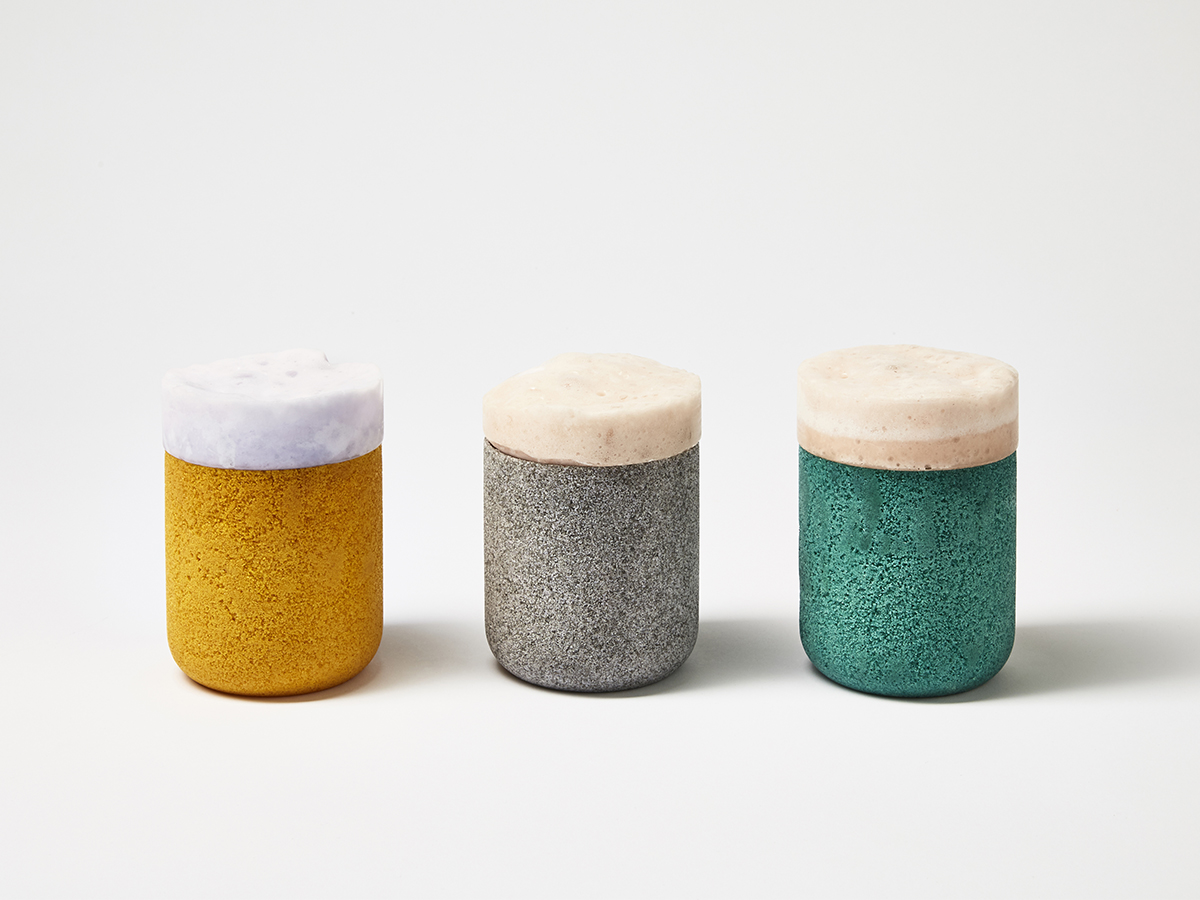
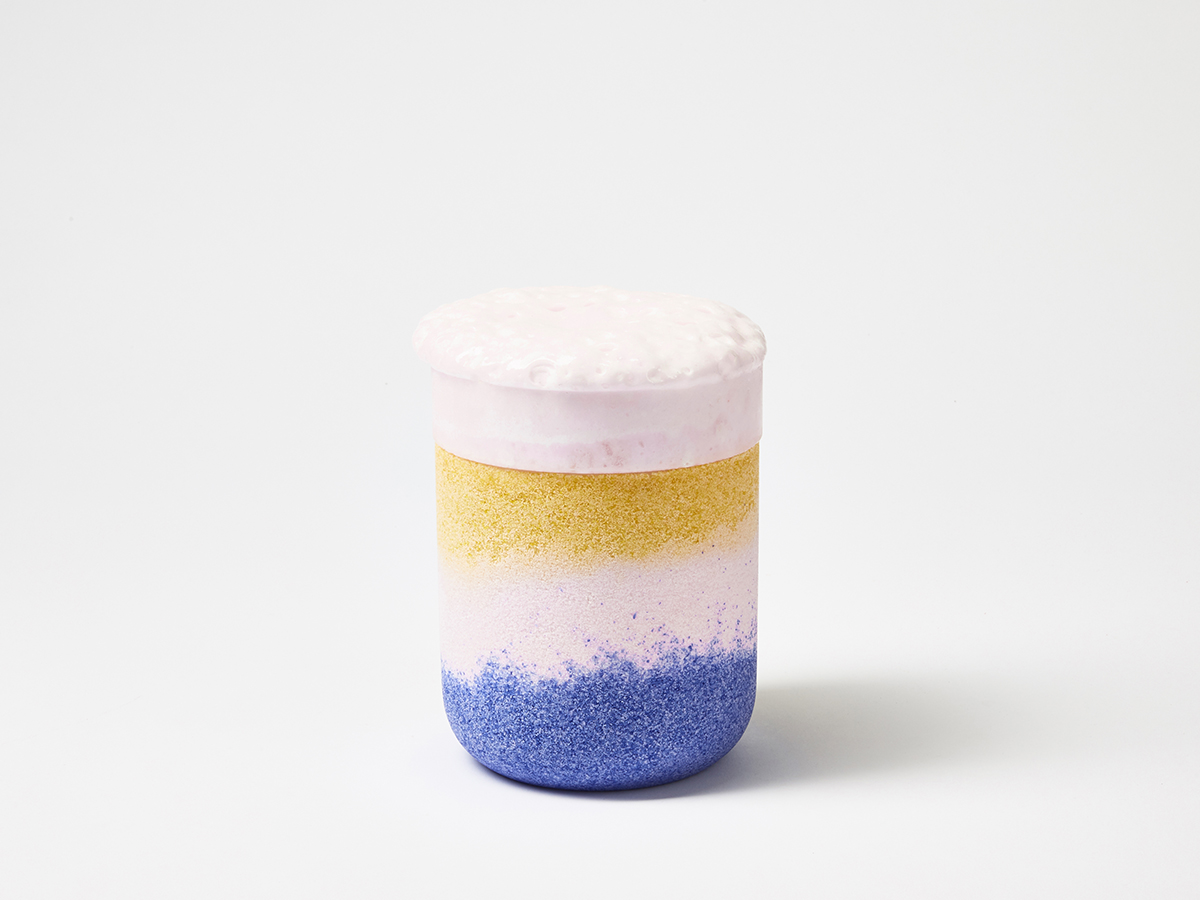
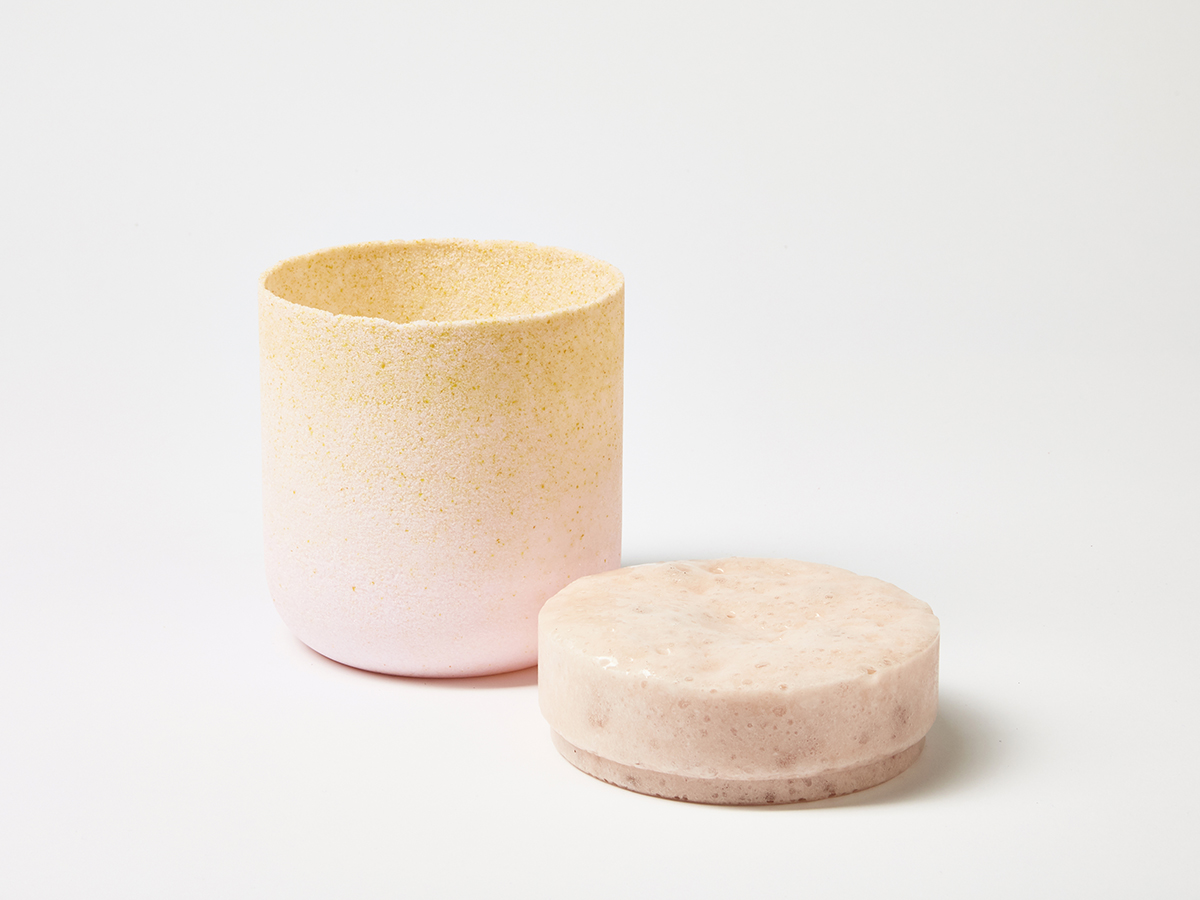
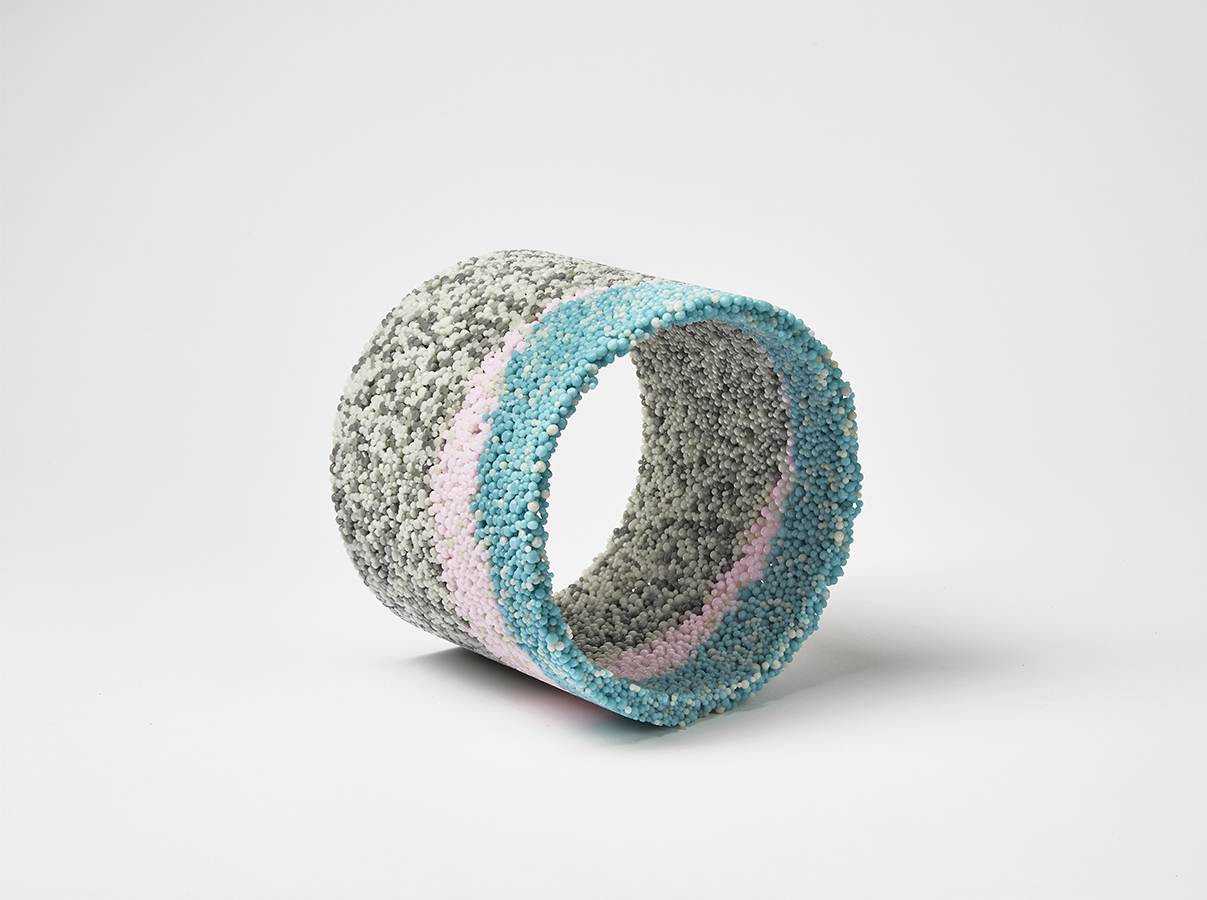
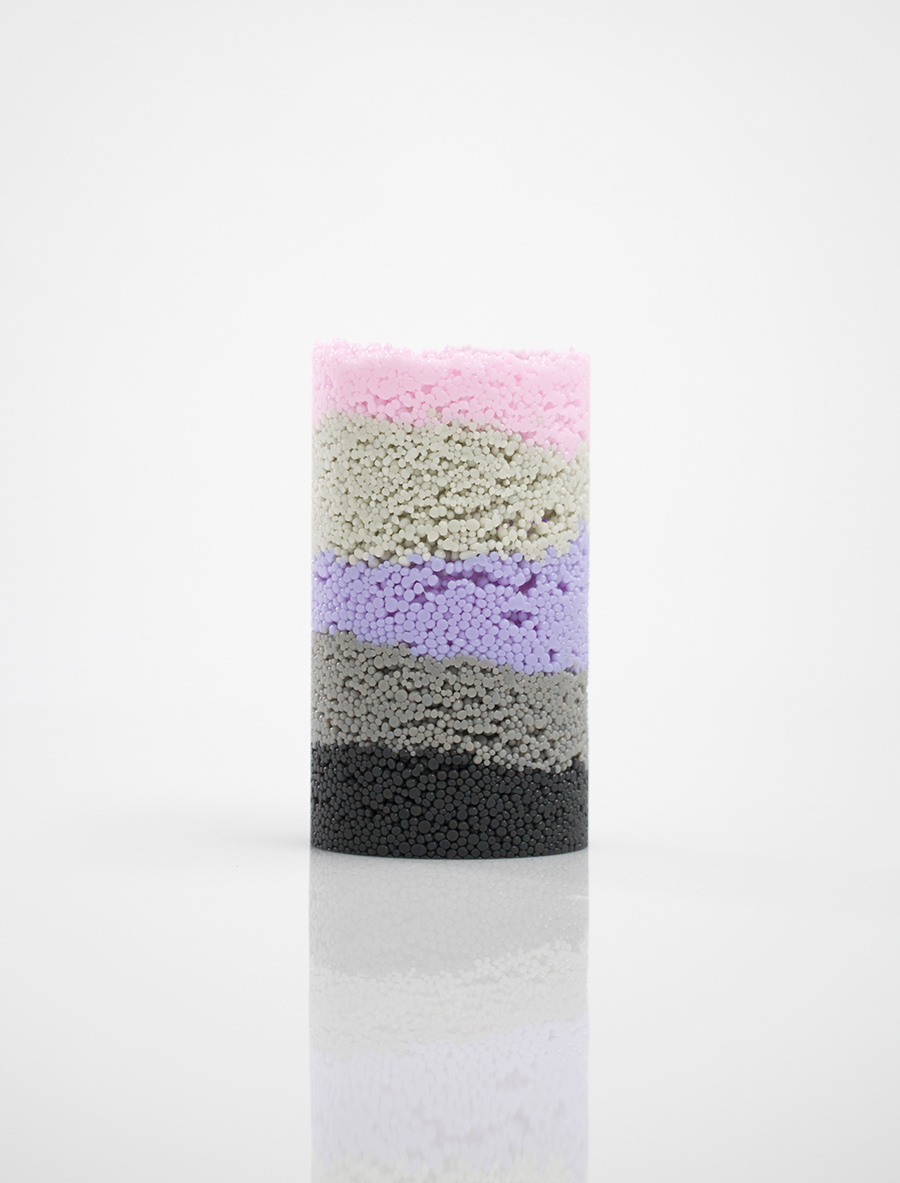
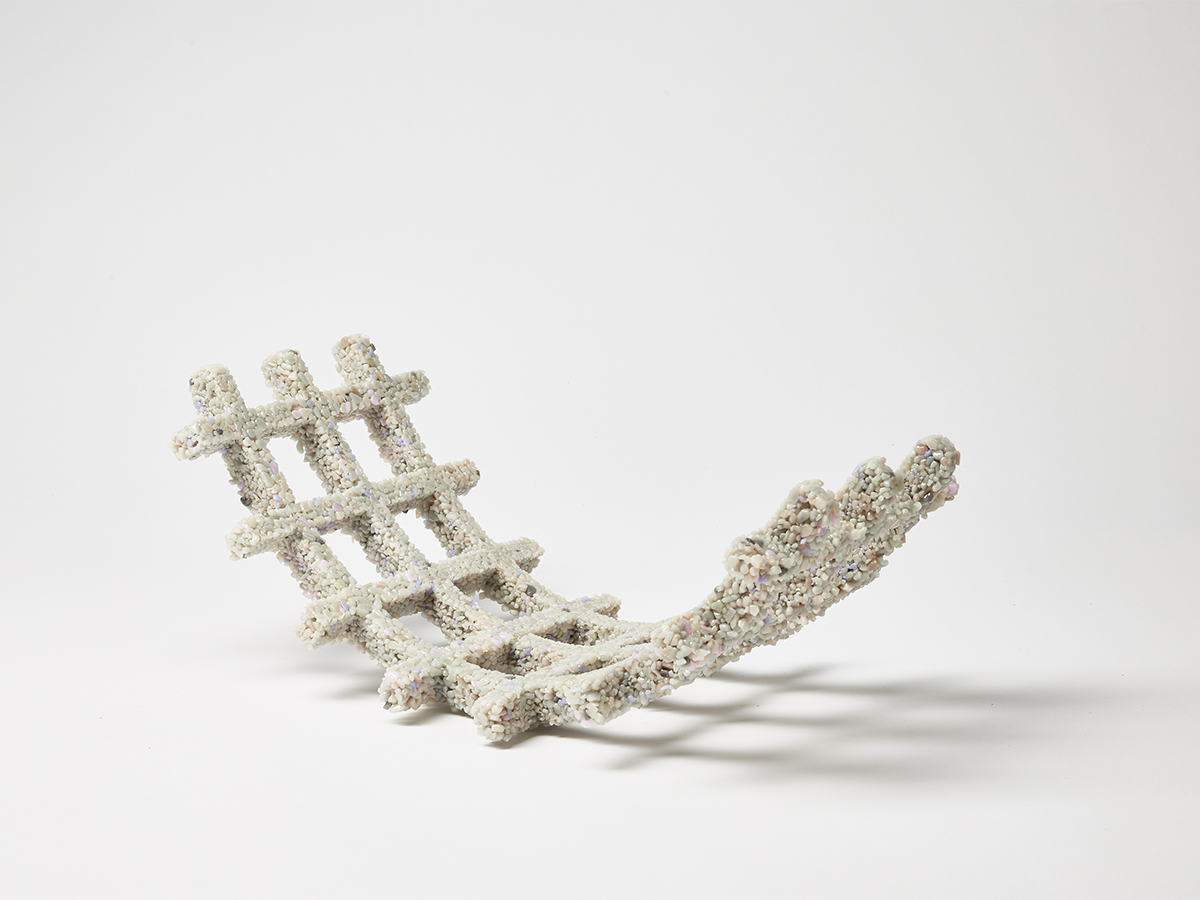
In Joshua Kerley’s experimental shapes and jars, each body is formed from tiny glass frit balls that are fused together inside a mold in a kiln, making the final piece resemble something like packing foam. Jar lids are cast including an additive which creates bubbles during the casting process, also giving the glass a foam-like appearance. “Glassmaking has a rich and fertile heritage of imitating other materials — particularly those of higher value and status,” Kerley explains. “I utilize the transformative power and metamorphic capabilities of glass to emulate the physical characteristics of other materials; however, by referencing lower-value, modest materials, I aim to challenge the orthodoxies of material hierarchy, value, and status.”
Hojung Kim
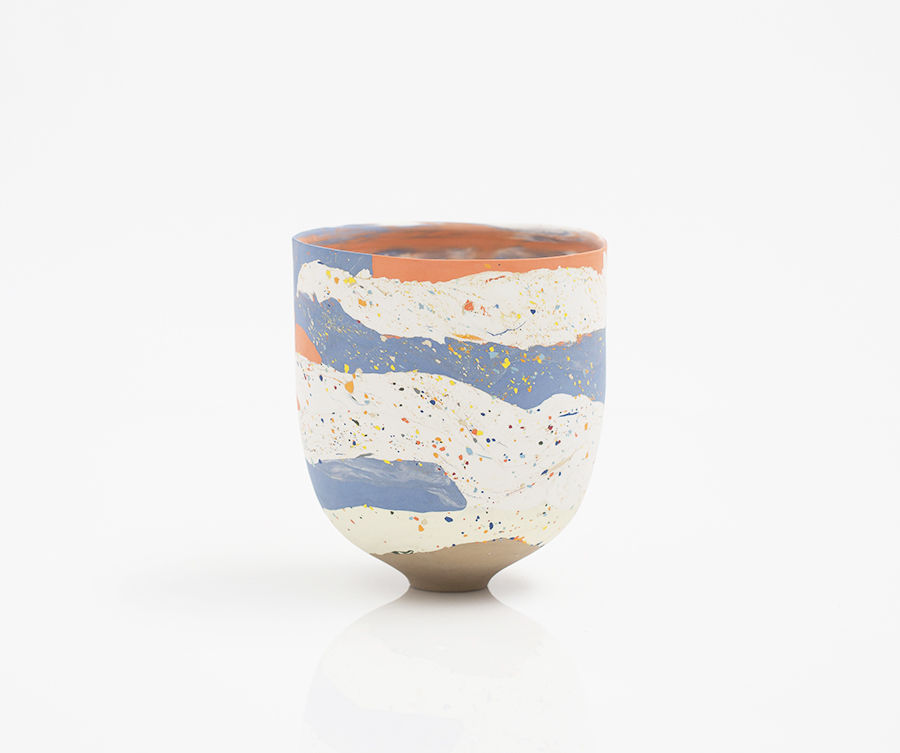
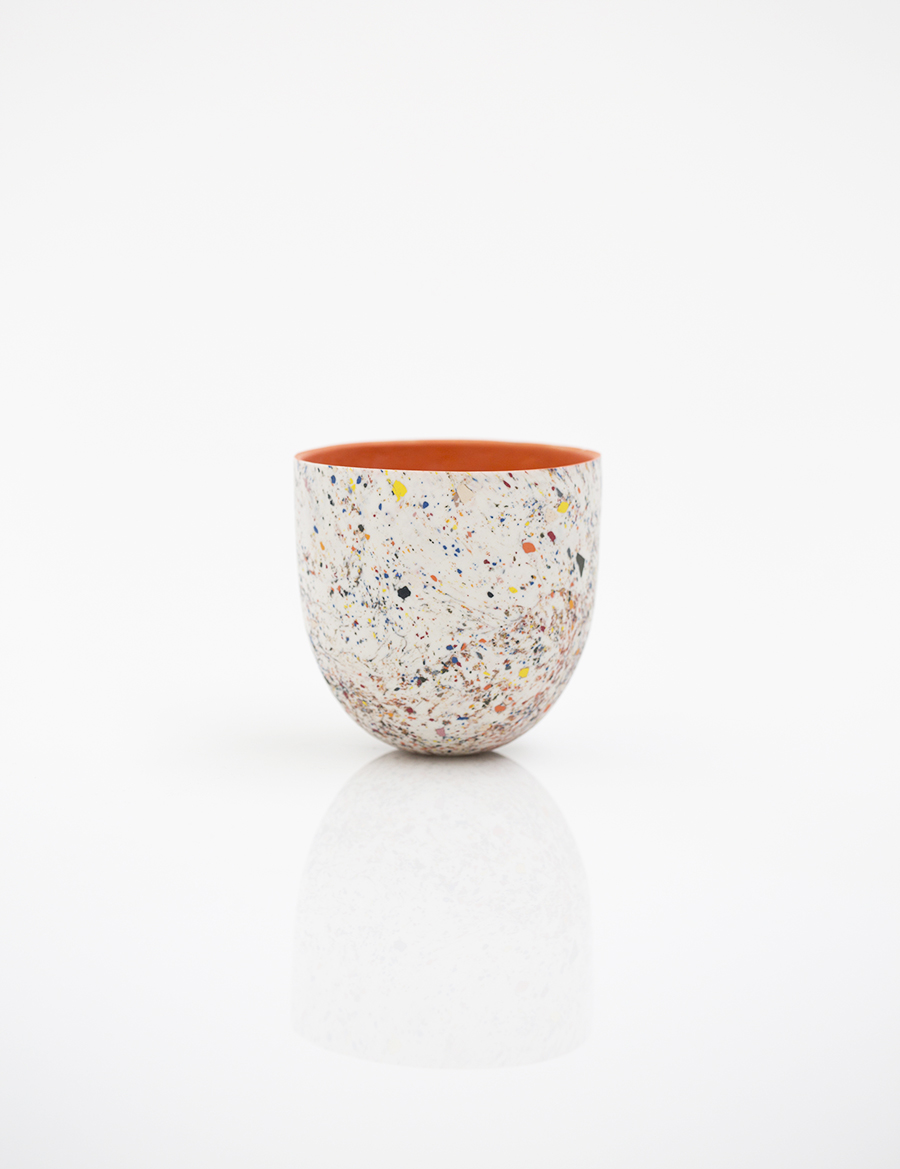
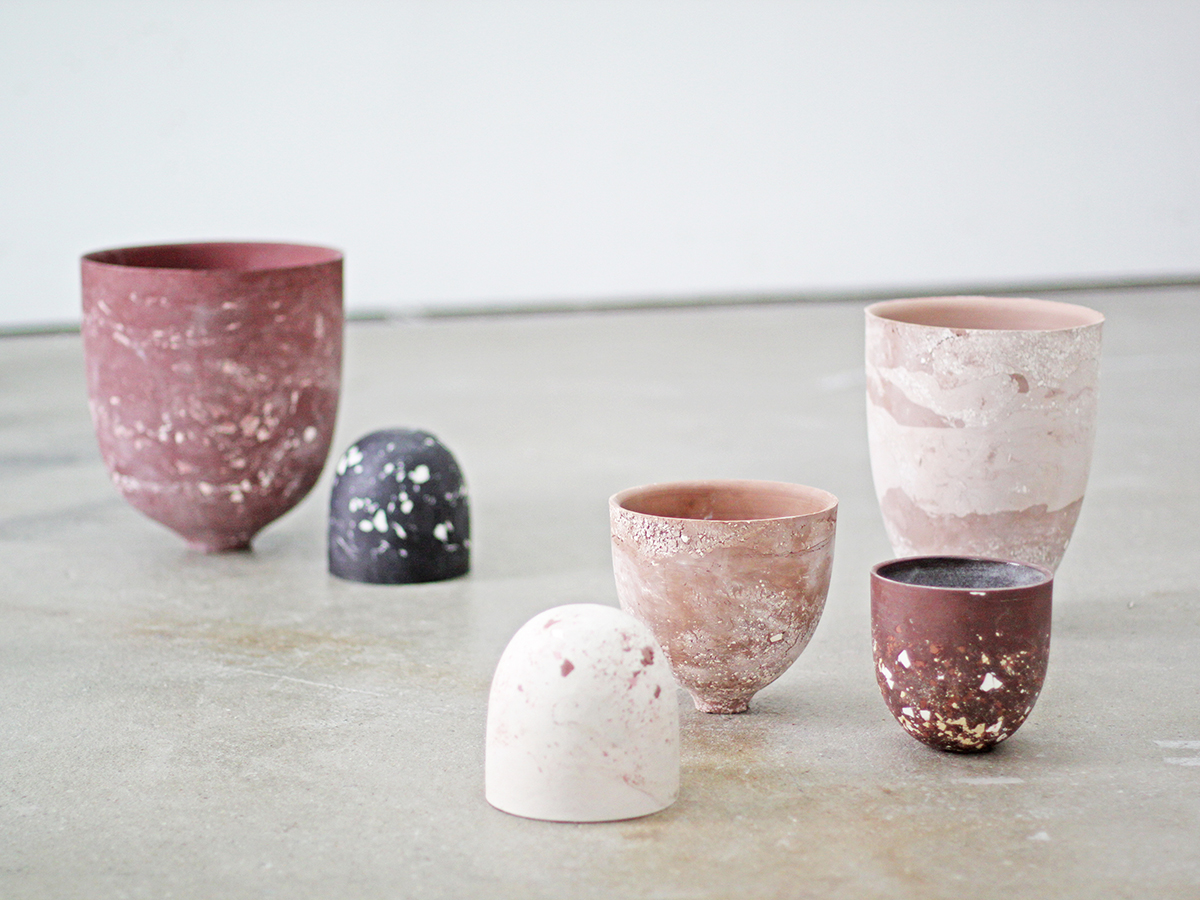
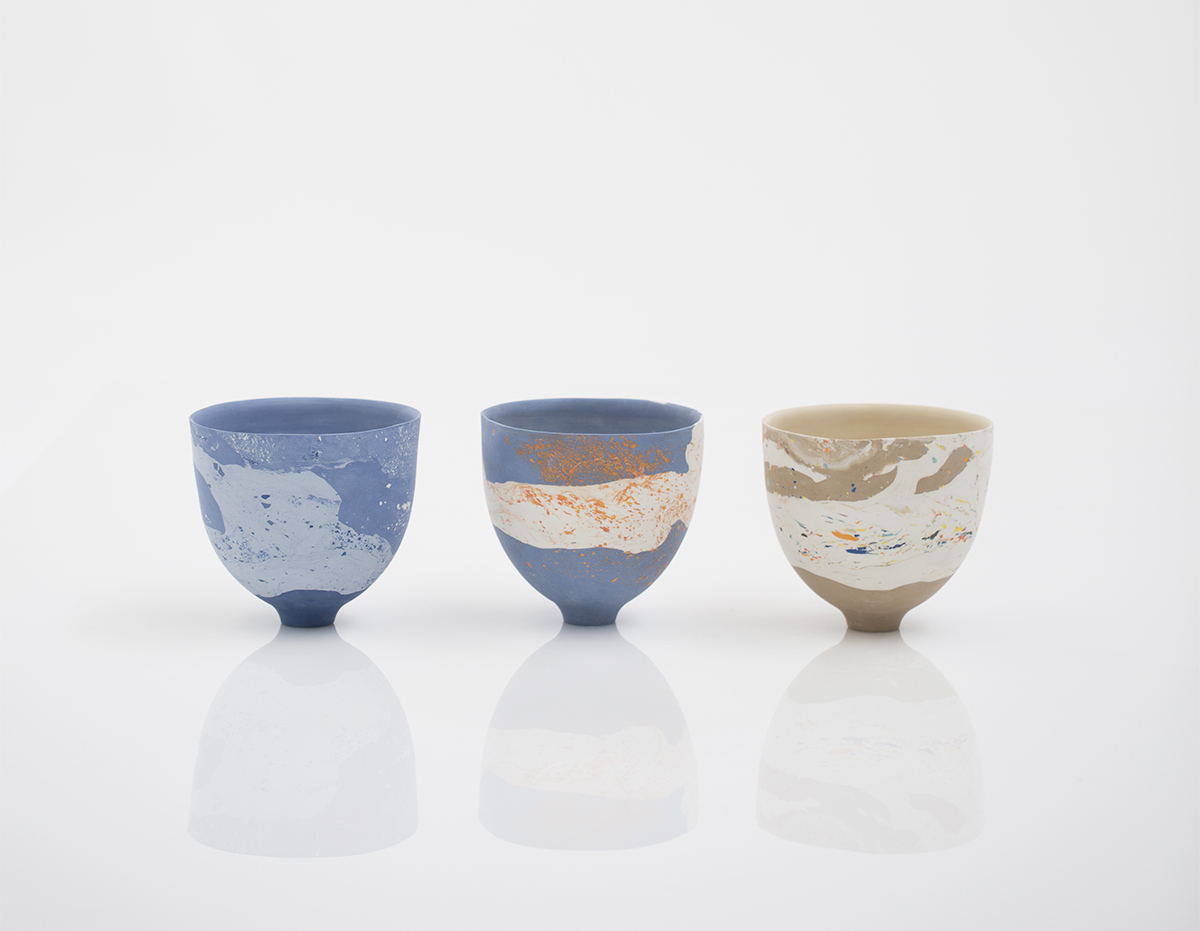 Questioning consumption and society’s desire for newness, Hojung Kim explores a method of recycling by which fragments of clay are remade into smoothly finished porcelain and stoneware bowls with streaky, terrazzo-like color drifting across the forms. Using a mix of traditional craft techniques and contemporary methods, the vessels explore movement and harmony, offering up brilliant hues including sky blue and multi-colored orange.
Questioning consumption and society’s desire for newness, Hojung Kim explores a method of recycling by which fragments of clay are remade into smoothly finished porcelain and stoneware bowls with streaky, terrazzo-like color drifting across the forms. Using a mix of traditional craft techniques and contemporary methods, the vessels explore movement and harmony, offering up brilliant hues including sky blue and multi-colored orange.
Yuxun Ye
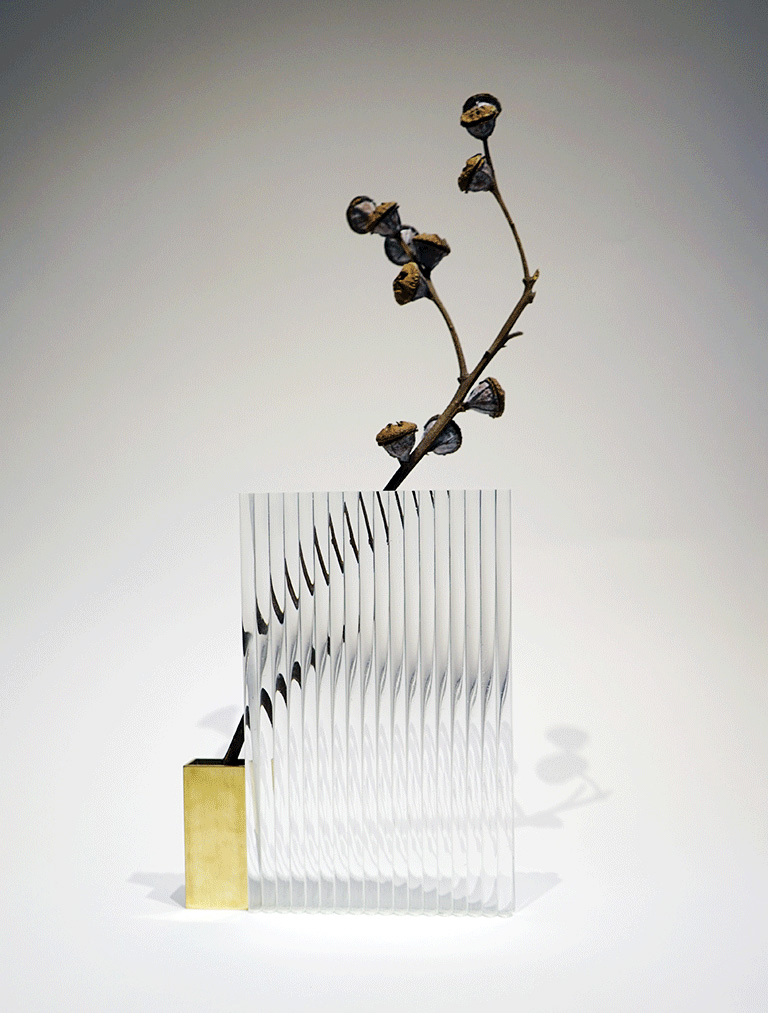
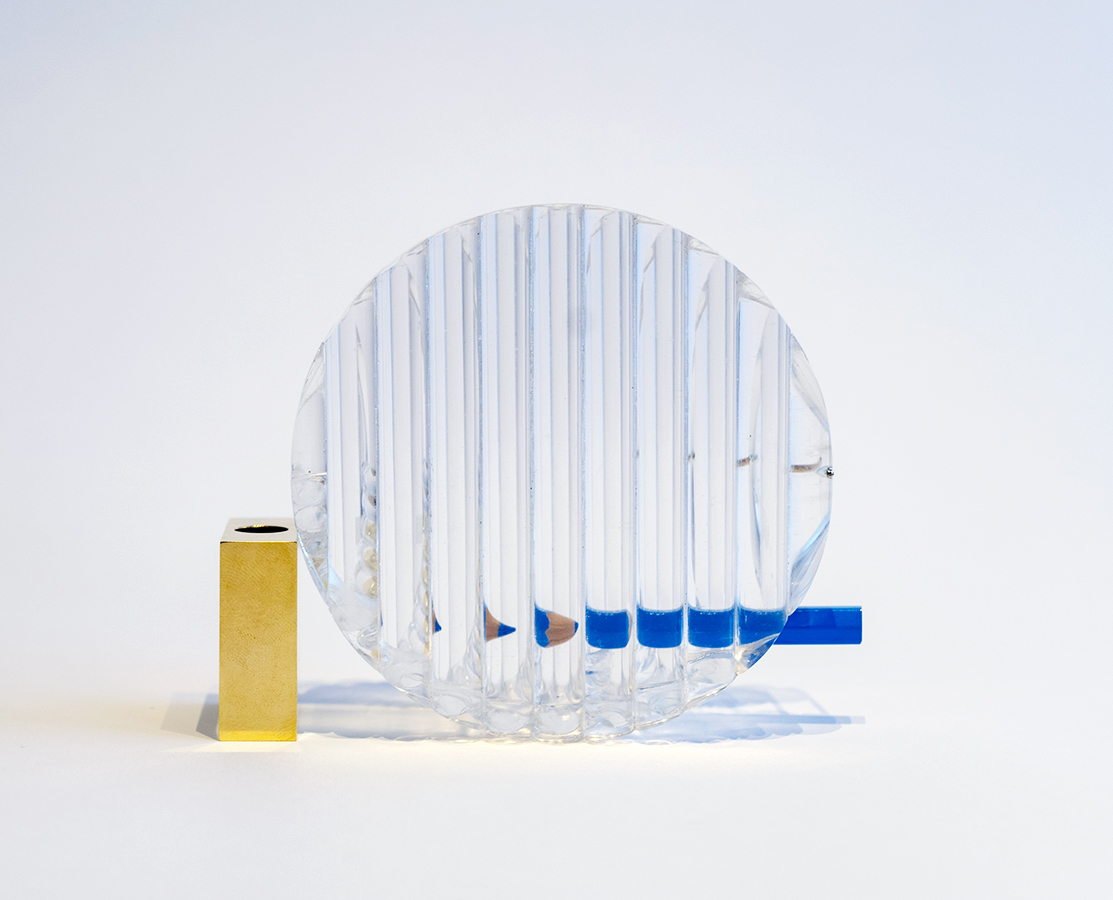
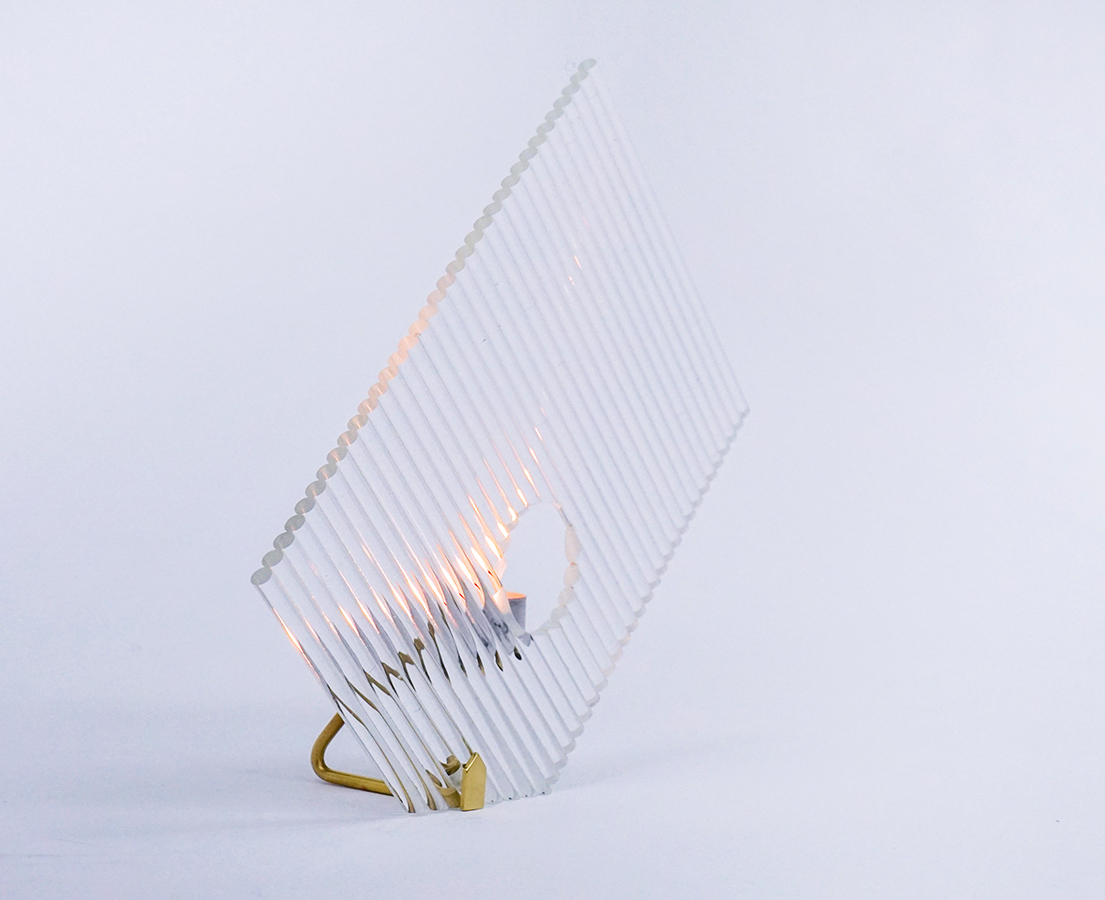
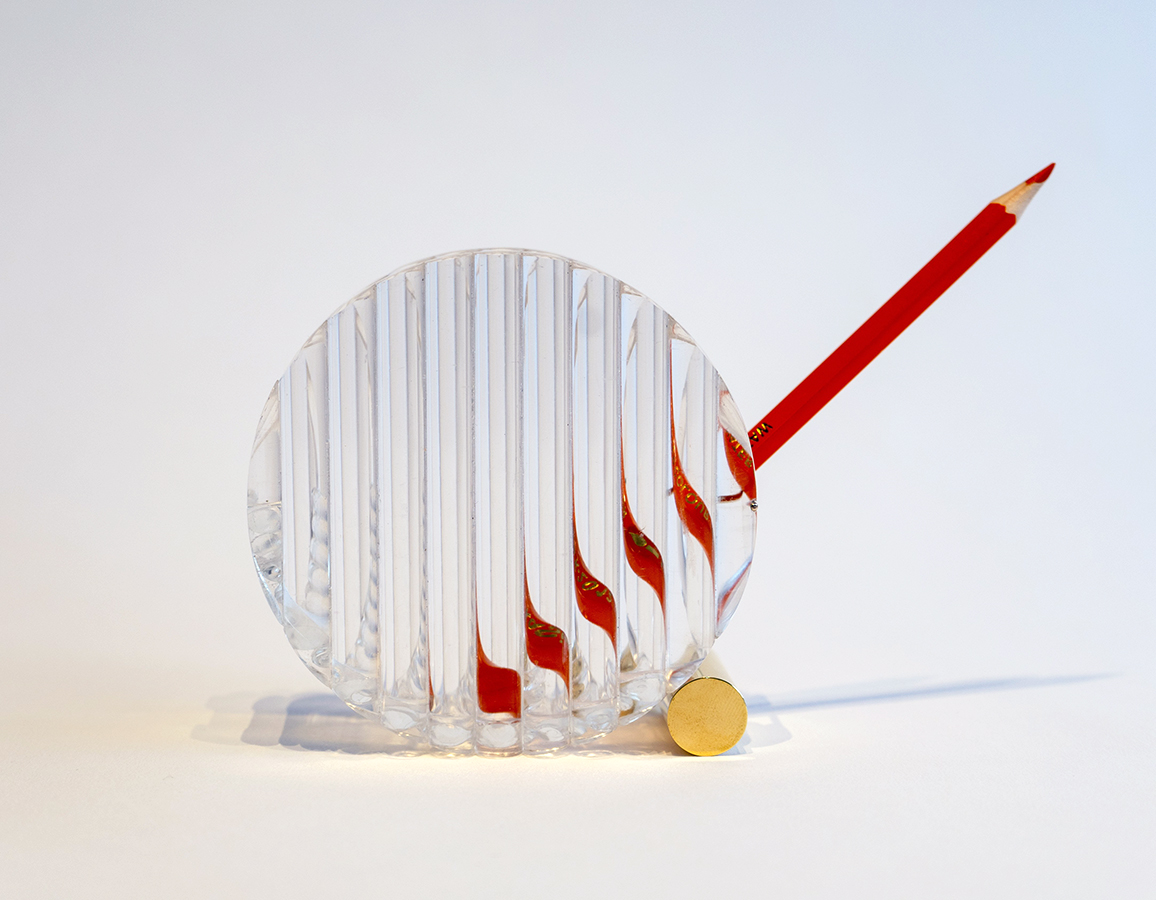 Seeing an opportunity for a more intuitive interaction with the materials we live with, Yuxun Ye — who received professional glass training at China’s Academy of Art — uses textural ribbed glass forms to manipulate objects and light in a series of functional objects including vases, pen holders, and lamps. Manipulating the optic quality of glass through refraction, he transforms both object and material, disrupting the viewer’s visual perspective.
Seeing an opportunity for a more intuitive interaction with the materials we live with, Yuxun Ye — who received professional glass training at China’s Academy of Art — uses textural ribbed glass forms to manipulate objects and light in a series of functional objects including vases, pen holders, and lamps. Manipulating the optic quality of glass through refraction, he transforms both object and material, disrupting the viewer’s visual perspective.
